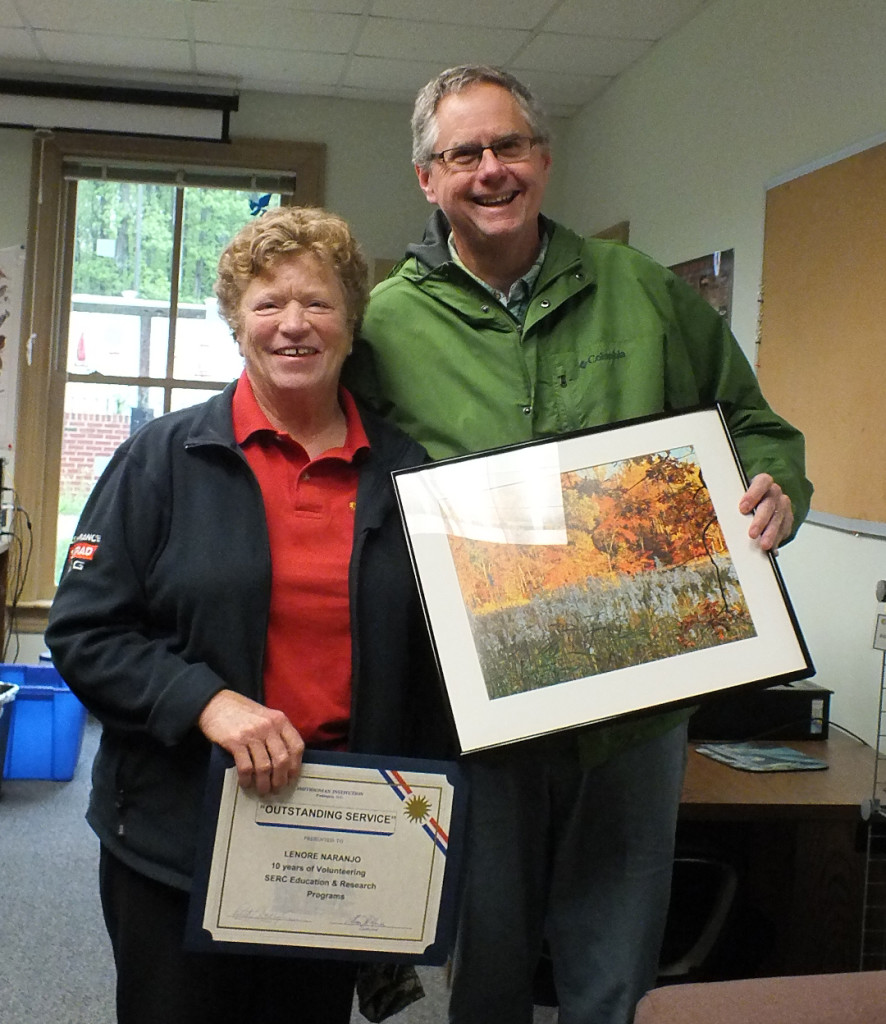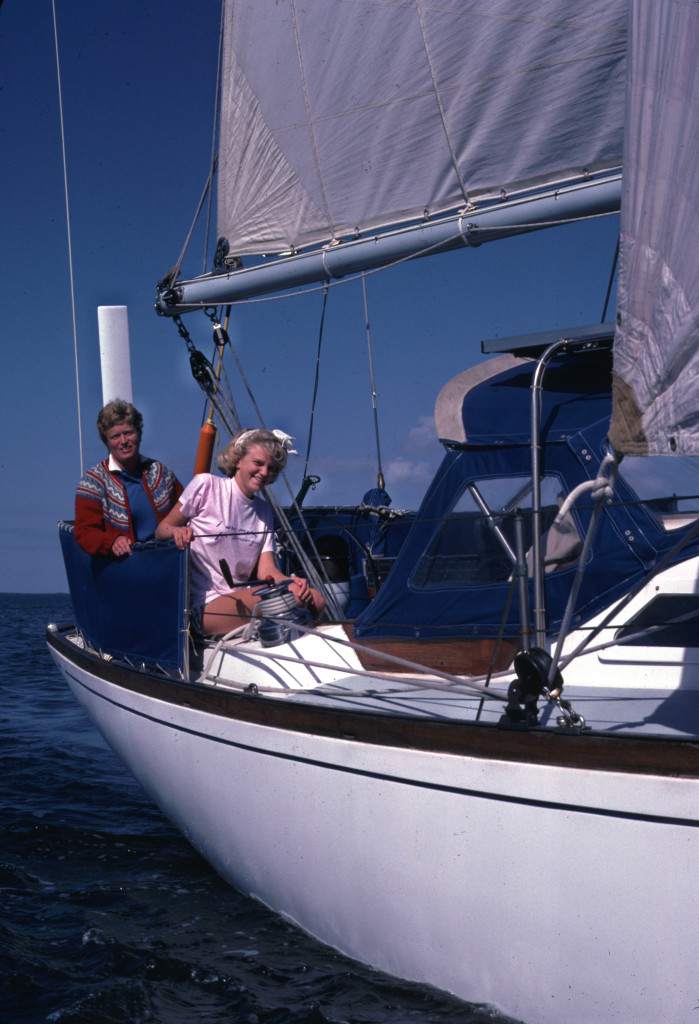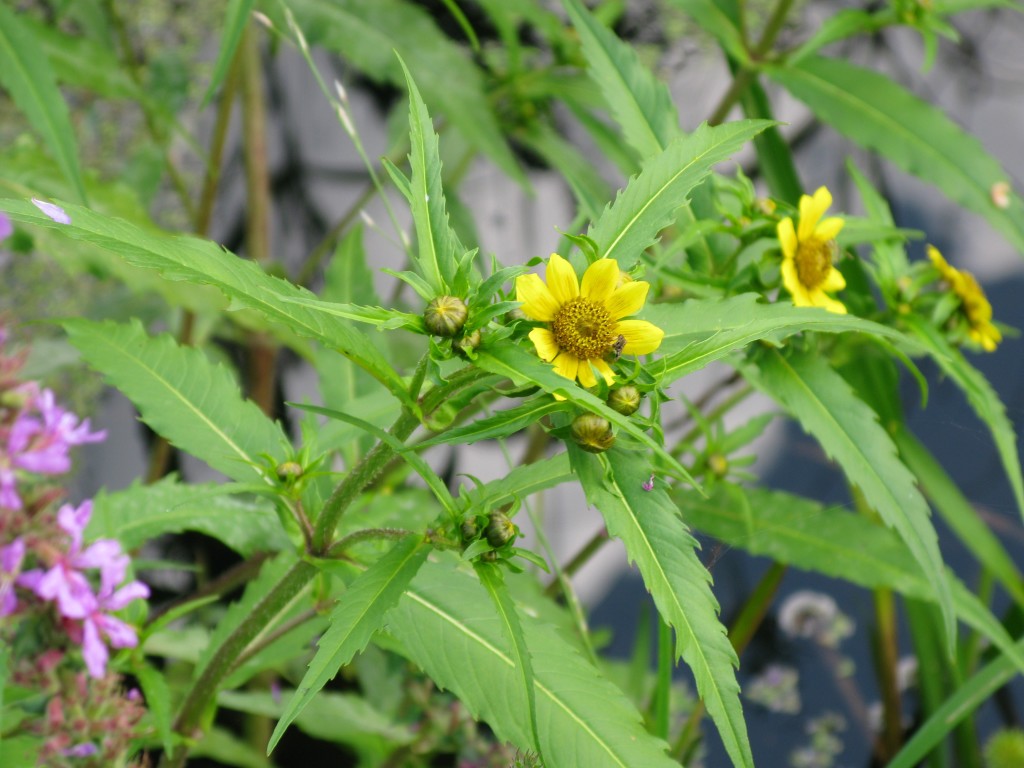
Lenore Naranjo celebrates 10 years of volunteer, with SERC volunteer coordinator Dan Gustafson. (SERC)
by Sara Richmond, communications volunteer
In 2016, nearly 5,000 students and other visitors learned about the Chesapeake Bay ecosystem firsthand through education programs at the Smithsonian Environmental Research Center (SERC). They ventured on hikes and canoe trips, hauled in fish and invertebrates with seining nets, and studied the anatomy of blue crabs. SERC’s education programs are possible through the help of dozens of volunteers who lead field trips and assist behind the scenes. In the coming months, we’ll highlight the work of some of these volunteers in the SERC newsletter and on our blog.
Lenore Naranjo has been volunteering with SERC for over 13 years. After starting as a volunteer in SERC’s canopy labs, she began working with the education program, leading field study groups that give children a hands-on approach to a variety of marine habitats.
“We set up baskets with oysters, and they stay sitting on the bottom of the river through spring, summer, and fall, where they act as a habitat for fish and small critters,” she explains. During field trips, she pulls the baskets from the river bed and sets them in a tray of water so children can explore the baskets’ contents. “Some kids are very hesitant and don’t want to put their hands in something unfamiliar. But then they watch their friends who aren’t hesitant, and the next thing you know, they’re in there too, pulling out fish and crabs.”

Lenore Naranjo (left) and her daughter aboard Wind Shadow in Nova Scotia. From 1984 to 1985, Lenore and her husband, Ralph Naranjo, took a year-long sailing trip with their two children, Tara and Eric.
(Photo: Ralph Naranjo)
For Lenore, the most rewarding part of volunteering is being able to teach children, especially those who have not previously had access to a place like SERC, about their input into the environment and how they influence the world around them.
It’s a lesson she has shared with her own children, too. When her children were four and six years old, her family embarked on a five-and-a-half-year sailing trip around the world. They visited places like Tahiti, New Zealand, Australia, Mauritius, and South Africa, often stopping for several months to live, work, and attend school. “It was during that time that we began to see the interconnection between what people were doing on land and what was happening in the ocean,” she says. She hopes she can help visitors to SERC see that connection, too.
“Sailing was a big part of our life, and still is. Now, we also do a lot of kayaking. You see a lot of what’s around you—and how it’s faring these days—when you’re sitting low in the water.”
And one of her favorite things to see when she’s exploring the Chesapeake Bay by kayak? “The burr marigold,” she says. “It’s very tall; it almost looks like a daisy or a black-eyed Susan. Go kayaking into any of the river mouths in the late summer or early fall, and they’re blooming and beautiful.”
Want to join the team? Contact Karen McDonald (mcdonaldk@si.edu) to learn about education volunteer opportunities.

Burr Marigold, Bidens cernua. (Credit: Malte)
Burr marigold photo used by permission of the following Creative Commons license.

